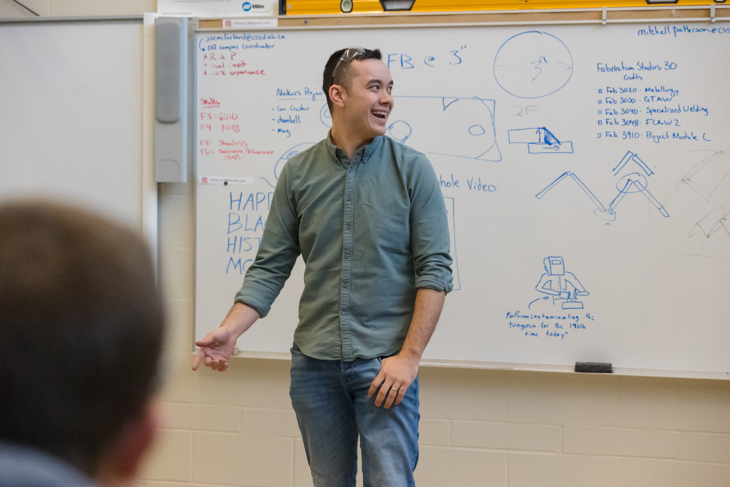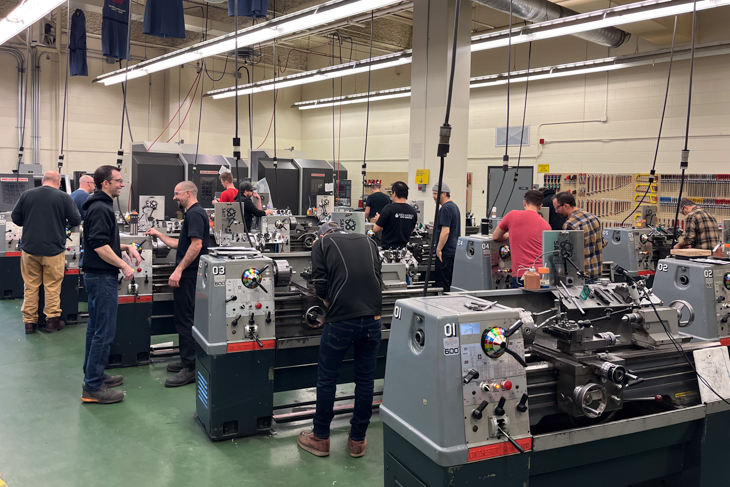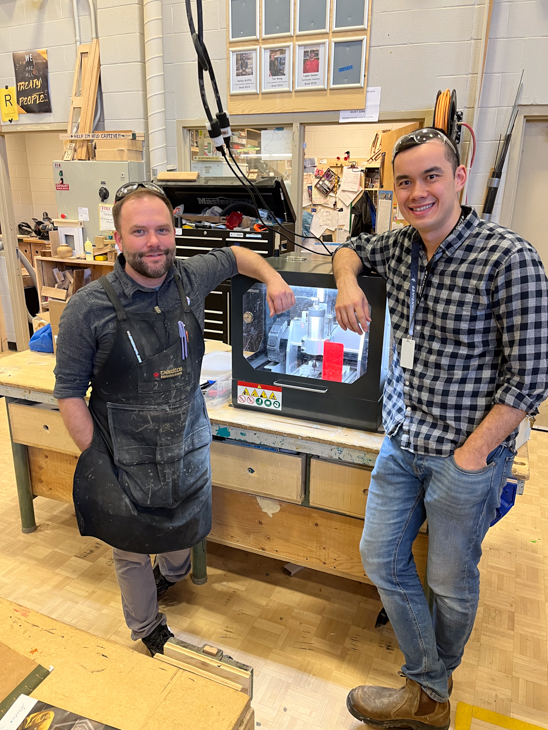Taking the machining trade to high school shop classes across southern Alberta
CADMUS Teaching Chair recipient on the importance of creating early awareness for the skilled trades

Tim Wong has been on a mission to solve a gap in high school shop curriculum as it relates to the machining trade. When he was selected as the 2023/24 CADMUS Teaching Chair, Wong was excited to begin working on a project he’d previously tackled in his spare time, and was now able to give it his full attention.
During his time at SAIT, Wong built connections with high school shop teachers who were eager to offer machining credits to students, but lacked the necessary resources to do so. Witnessing their dedication, he began working with them to bridge the gap between high school shop classes and post-secondary machining programs, and when he learned of the CADMUS award, he saw an opportunity to provide training, mentorship and resources.
Instructors selected as chair recipients are given the opportunity to off-load teaching duties for up to four months, and a total budget of $20,000 to execute their proposed project. With the goal of promoting trades, mentorship and enhancing program quality, Wong, a machinist and instructor with SAIT’s School of Manufacturing and Automation, was ready to launch his Machinist Outreach Program project to increase awareness of the machining trade.
Building off his high school experience while working in the trades, and the lack of understanding around the skilled trades as a career choice, Wong wanted to take advantage of the equipment already in high school shop classes to teach machining skills and build awareness of the trade. The project was comprised of three main objectives: teacher training, access to the right tools and raising the profile of machining as a career option.
To execute the teacher training portion of his program, Wong worked closely with SAIT’s Youth Initiatives, the Calgary Board of Education and the Calgary Catholic School District to connect with shop instructors interested in teaching machining skills.
Teachers in classrooms with existing equipment were excited to learn how to teach on it.
Through an Open Educational Resource titled Machine Shop Fundamentals developed by Wong, teachers were able to learn online at their own pace with a hands-on training component offered at SAIT.

“The comprehensive online resource equipped educators with accessible instructional materials, empowering them to deliver engaging machining education to their students. After completing the online training, 16 teachers attended a day of in-person training,” says Wong.
The second phase of the Machinist Outreach Program involved leaning into existing industry relationships to equip schools with consumables and supplies needed to sustain their programs.
“From experience working with high schools on previous projects, I recognized that many schools had the appropriate machines but often lacked the tools and consumables needed to offer machining credits to their students,” says Wong.
Donations from industry — totalling more than $25,000 — allowed Wong to build toolboxes of supplies used in the Machinist program at SAIT to give to the participating schools. This ensured students were learning with the same tools they would see in post-secondary training, establishing a standard of practice at the high school level.
The program also included extensive outreach to foster student engagement and awareness of the skilled trades. At over 20 high schools, Wong connected with more than 500 students at sessions showcasing machining skills and career paths. 
“I found out about the trades in high school and I think a career in trades provides students with different opportunities. They might look at the machines and think it’s not for them, but at least they’ve heard about it and some might be super interested in it,” says Wong. “People helped me get into the trades in high school, so I feel also it's kind of paying it forward and giving back a little bit, which feels good to do.”
Wong measures the program’s success not only by objectives met, but by seeing students he engaged with at high schools now enrolled in the Pre-employment Machinist program at SAIT.
“I’m really happy with the outcomes. Seeing high school teachers able to utilize equipment they already had but didn’t know how to use,” says Wong. “A good foundation was laid creating open lines of communication. Going into high schools now and seeing students working on the equipment is really fulfilling.”
Skills for the Future
We prepare students for successful careers and lives.
SAIT'S
2020-2025
Strategic plan

Oki, Âba wathtech, Danit'ada, Tawnshi, Hello.
SAIT is located on the traditional territories of the Niitsitapi (Blackfoot) and the people of Treaty 7 which includes the Siksika, the Piikani, the Kainai, the Tsuut’ina and the Îyârhe Nakoda of Bearspaw, Chiniki and Goodstoney.
We are situated in an area the Blackfoot tribes traditionally called Moh’kinsstis, where the Bow River meets the Elbow River. We now call it the city of Calgary, which is also home to the Métis Nation of Alberta.